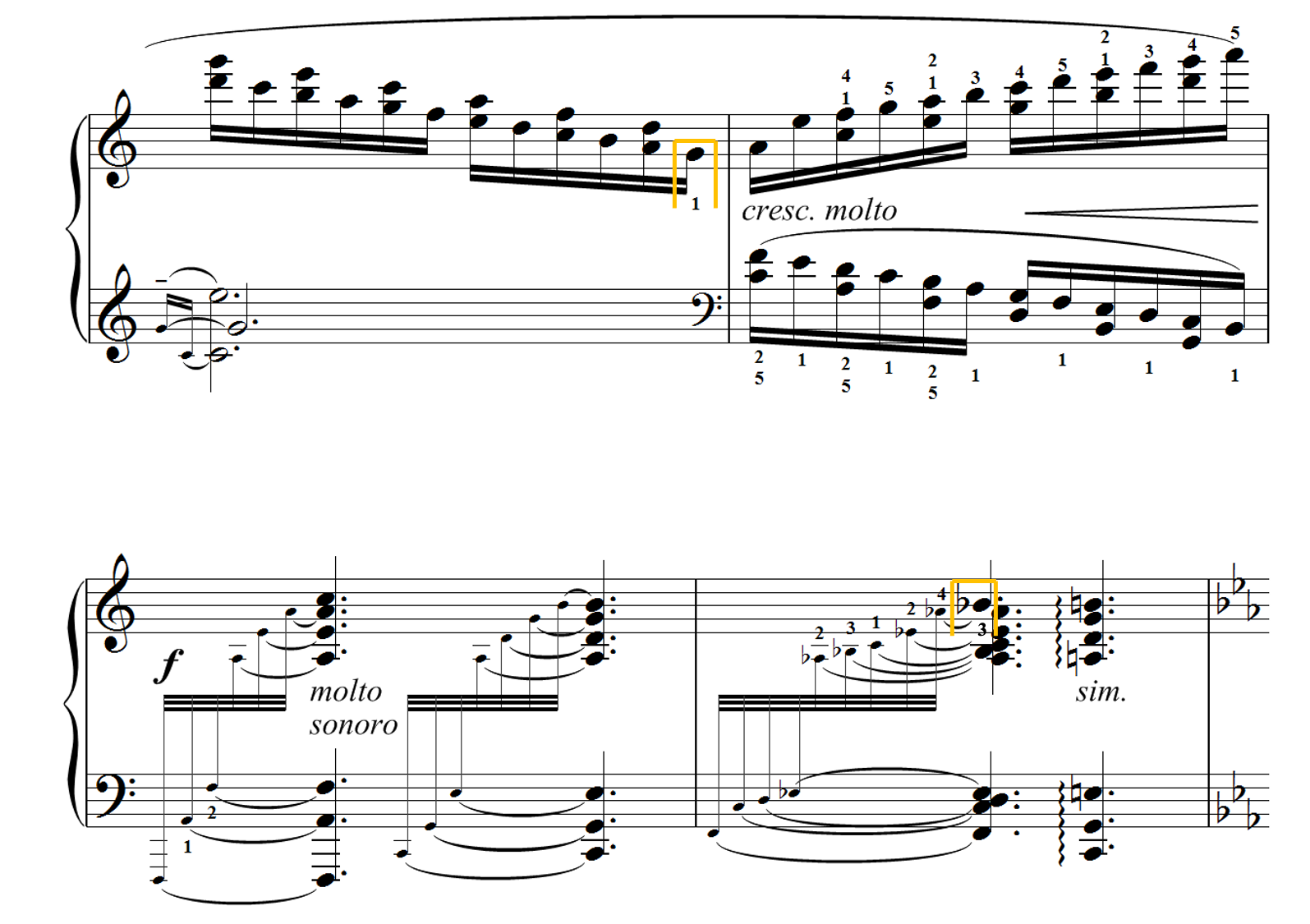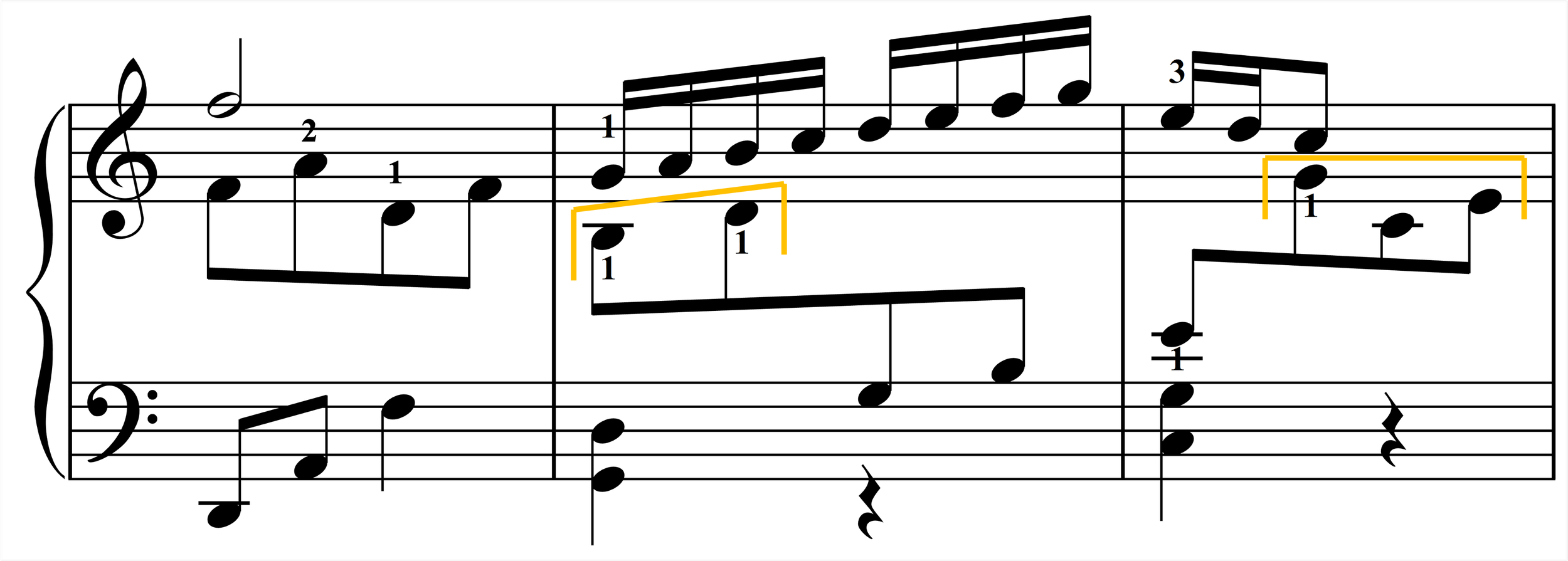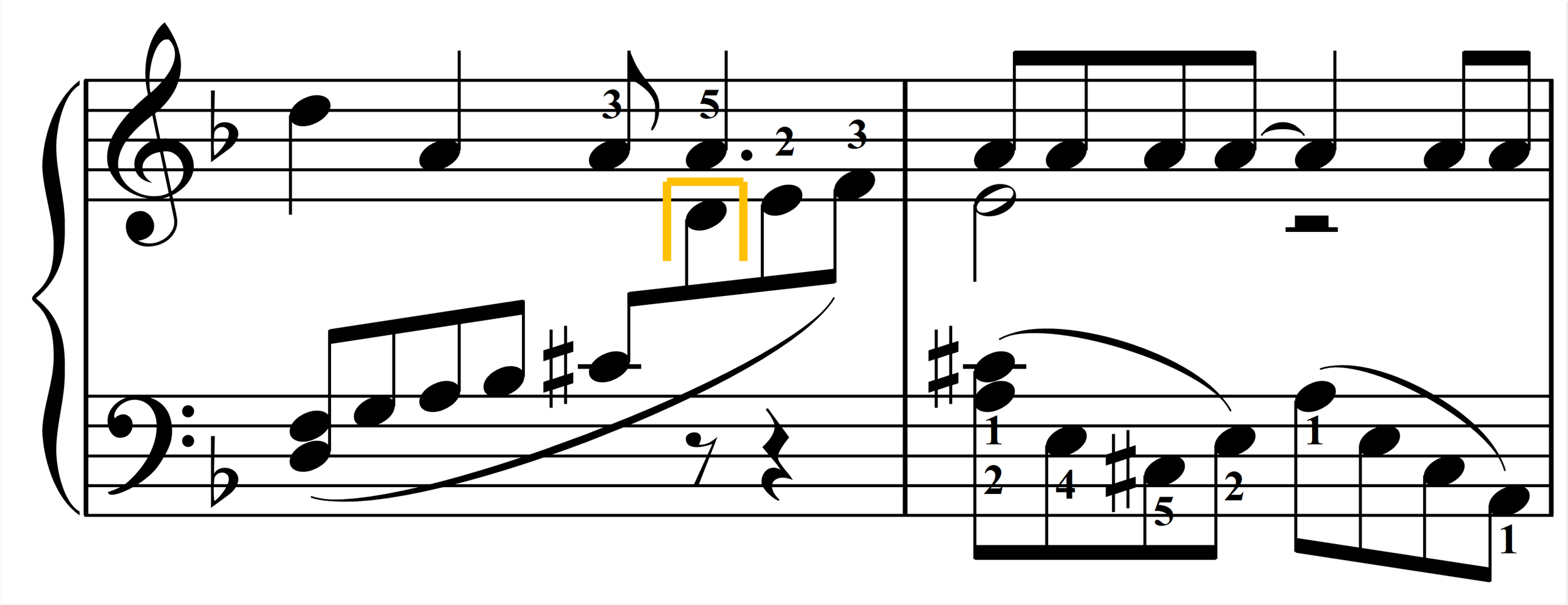“This redistribution makes the right-hand shifts less awkward, allowing the line to be played with stronger fingers.”
Submitted by Michael Clark
Published on 3/16/2020

“This redistribution makes the right-hand shifts less awkward, allowing the line to be played with stronger fingers.”
Submitted by Michael Clark
Published on 3/16/2020

“Switching the sixteenth notes to the left hand one note earlier allows the fingering patterns to flow more naturally in both hands. The suggested fingering for the grace notes in m. 31 uses stronger fingers to achieve the ‘molto sonoro’ forte tone Barber desires.”
Submitted by Michael Clark
Published on 3/18/2020


“Though no hand configuration makes this passage easy, I find it easier to take the bottom voice of the top staff in the left hand to facilitate the incredibly fast right-hand sixteenth notes.”
Submitted by Michael Clark
Published on 1/1/2020

“Taking the bottom octave in the left hand makes it possible to trill with stronger fingers.”
Submitted by Michael Clark
Published on 1/1/2020

“Changing the pedal with the melodic line allows the left hand to sneak up to take the E-flat from the alto line, freeing the right hand for a more relaxed trill.”
Submitted by Michael Clark
Published on 1/1/2020

“Taking the bottom octave in the left hand makes it possible to trill with stronger fingers.”
Submitted by Michael Clark
Published on 1/1/2020

“Transferring the E-flat and G-flat silently into the left hand frees the right hand for a more melodic performance of the turn with stronger fingers.”
Submitted by Michael Clark
Published on 4/18/2020

“Using 3-2-1 in both hands for each four-note group eliminates confusion and ensures a bold declamation.”
Submitted by Michael Clark with thanks to Robert Roux
Published on 1/3/2022

“Taking the alto notes in the left hand allows the right hand to use stronger fingers on the triplet.”
Submitted by Michael Clark
Published on 1/1/2020

“Taking the alto notes in the left hand allows the right hand to use stronger fingers on the triplet.”
Submitted by Michael Clark
Published on 1/1/2020

“Taking the E in the left hand facilitates a more reliable fingering for the ornament.”
Submitted by Michael Clark with thanks to Robert Roux
Published 1/11/20

“Taking the alto voice in the left hand frees the right to use stronger fingers on the ornamental figure.”
Submitted by Michael Clark with thanks to Jennifer Hayghe
Published on 1/1/2020

“This fingering helps me highlight the accented melody with stronger fingers.”
Submitted by Michael Clark
Published on 1/5/2024

“I find it easier to play the scale unencumbered by the alto notes. I play those in the left hand by quickly rolling the chord rather .”
Submitted by Michael Clark
Published on 9/2/2023

“I share this figure between the hands as Price indicates until m. 67 which I prefer to play mostly in the right hand for greater control of sound and articulation. This also ensures the left hand G can be played with a strong finger.”
Submitted by Michael Clark
Published on 1/5/2024

“Playing the melody notes while sustaining the third below all in the right hand requires an uncomfortable stretch. The left hand can easily help out, freeing the right hand to use an optimal fingering.”
Submitted by Michael Clark
Published on 1/6/2024

“Taking this alto note in the left hand allows the right hand to better align behind the melody notes, promoting a more singing tone.”
Submitted by Michael Clark
Published on 9/2/2023

“The left hand can quite comfortably finish its scale on D, allowing the right hand to use a better fingering for the repeated note.”
Submitted by Michael Clark
Published on 9/5/2023